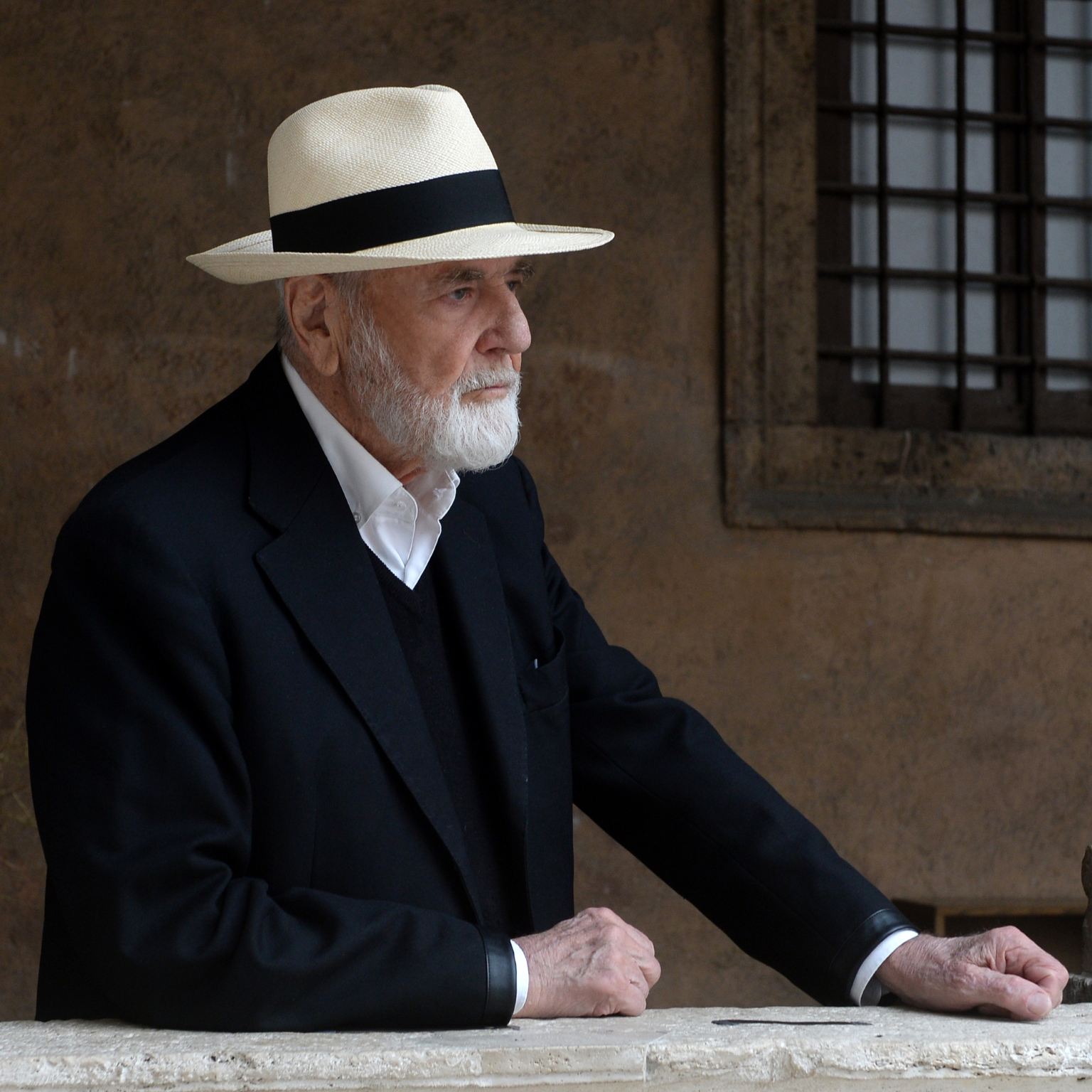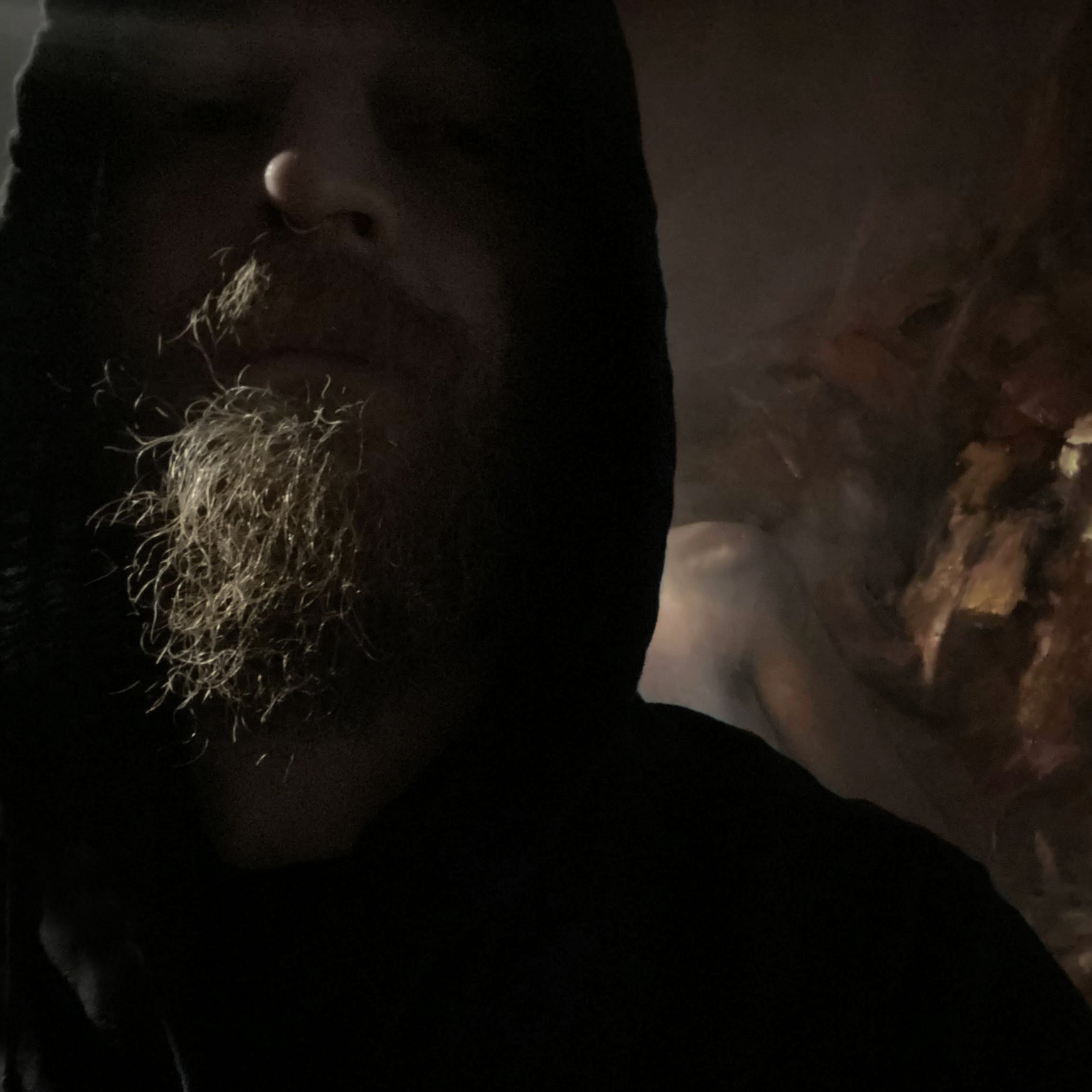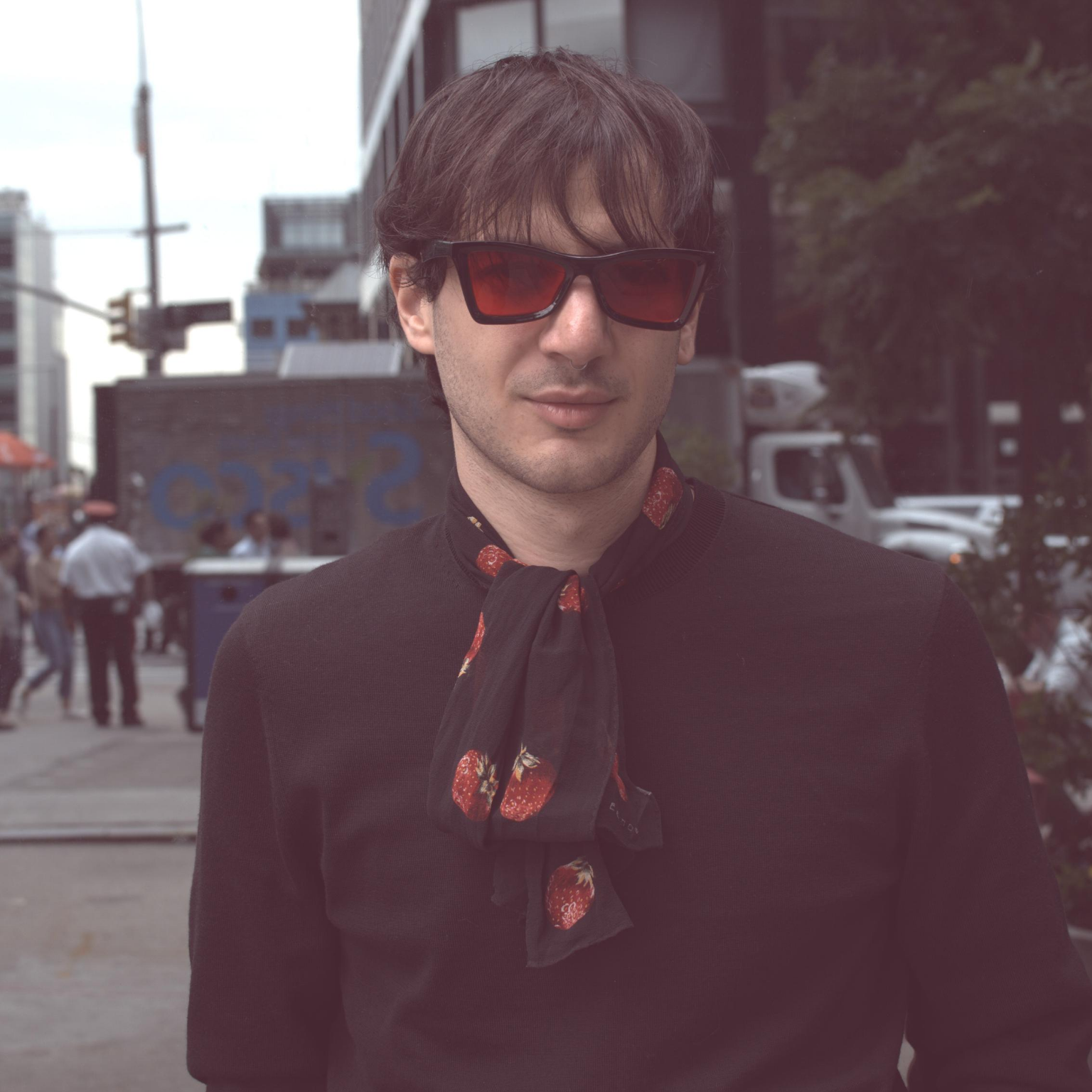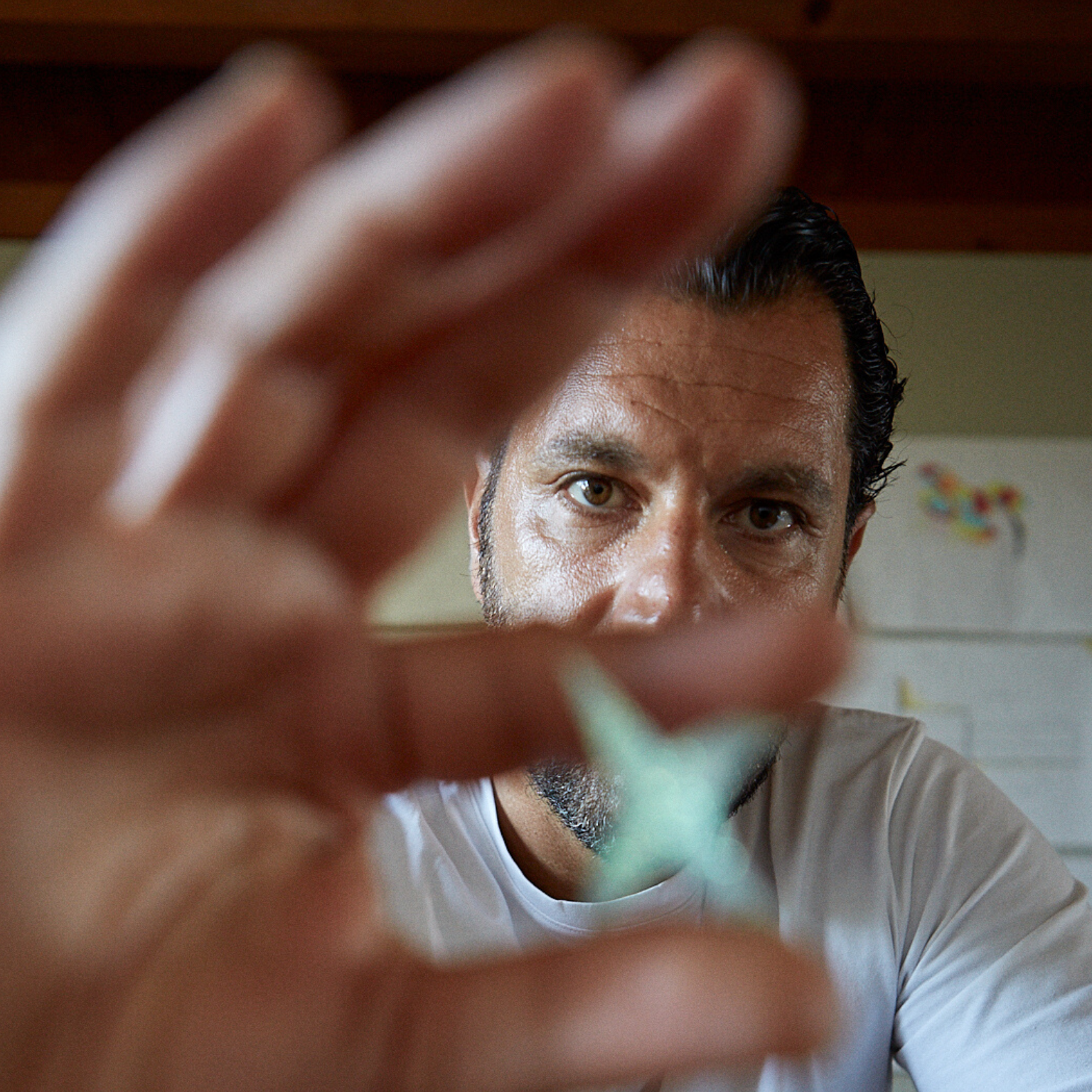Michelangelo Pistoletto, artist from Biella, Italy. Photo © Pierluigi Di Pietro
Michelangelo Pistoletto (Biella, 1933) is one of the leading exponents of Arte Povera, an avant-garde artistic movement that originated in Italy in the second half of the 1990s when some artists began to create works of art with recycled, humble, and daily use.
A rich artistic production that ranges from paintings, installations, sculptures, and performances, and therefore telling its journey means tracing a part of the history of 20th-century art. Golden Lion for Lifetime Achievement at the 50th Venice Biennale (2003), Pistoletto is known for his conceptual works created with the aim of actively involving the viewer within each work, between social art and public art.
Among his main projects are the Mirror Paintings, the Cittadellarte, the Third Paradise, and La Formula della Creazione (The Formula of Creation), the latest editorial project in which the Italian artist retraces his artistic thought to date.
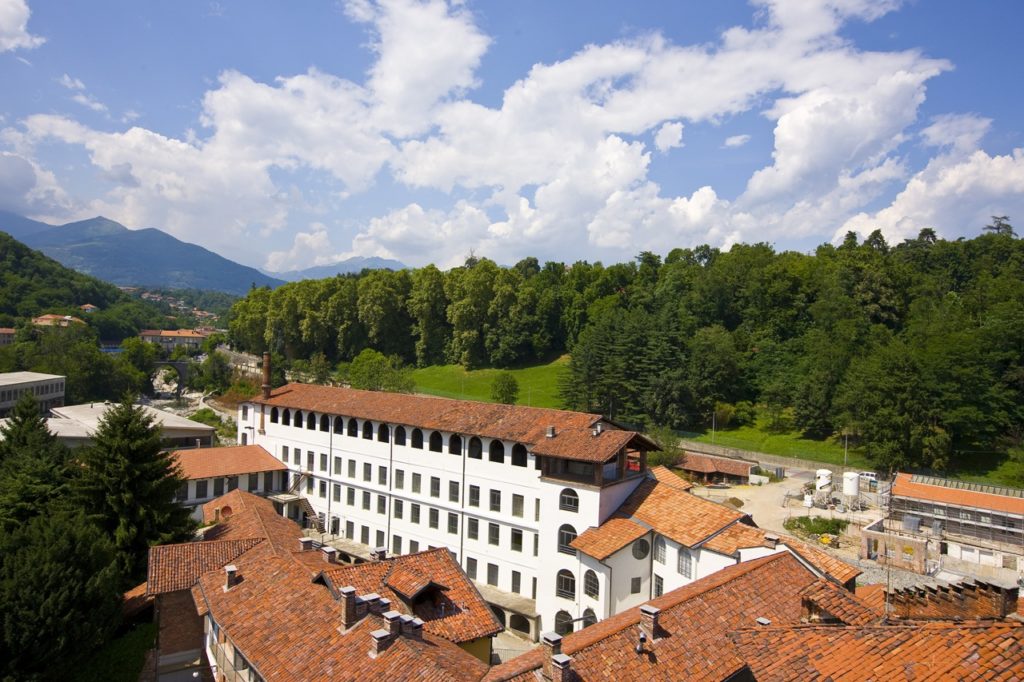
In 1998, in a former textile factory, he founded Cittadellarte, a large creative laboratory whose name encompasses two meanings: citadel (cittadella) as a place of protection and defense, and city (città) as an idea of comparison, openness, and opportunity with the rest of the world.
The Third Paradise manifesto was presented in March 2003 and represents the third phase of humanity which finds its origin in the balanced connection between artifice and nature which is essential to ensure the survival of mankind, precisely the Third Paradise. The logo of the project comes from the mathematical symbol of infinity in which the circle on the left and on the right represent the two elements that meet in the center where the existing is born, that is the finite within the infinite.
After the retrospective Année 01 – Le Paradis sur Terre (Year 1 – Earthly Paradise, 2013) at the Louvre Museum, the Italian artist who recently celebrated his 90th birthday was one of the protagonists of the Leçon d’Artiste series of meetings in the Parisian museum and to know how it went, among other things, we asked him in this exclusive interview for MuseumWeek Magazine.
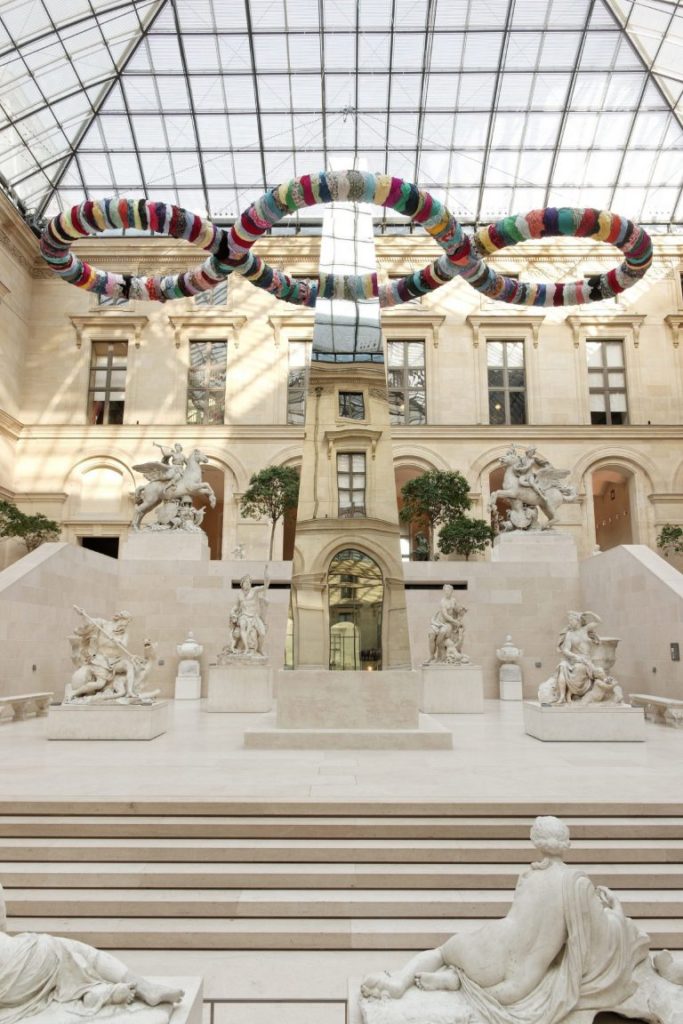
“These were three lessons following my exhibition at the Louvre which was held in the different departments of the museum in close connection with its spaces. We thought about holding these meetings to illustrate how my work and the museum could identify with each other. Indeed, in the exhibition, the work reflects the Louvre Museum because in the Mirror Paintings, you can see the ancient works, but also the visitor, therefore also today’s life: there is a need to connect the museum to it with a new possibility of interaction with the current world”.
So to find a new perspective?
This is what interests me because in the mirror there is not only the concept of Renaissance perspective, that is, looking forward; in the mirror, we also look behind our backs because we also see what has been. So the museum is the right place to show this past.
Projections of my work were made which, together with the sculptures, were taken to the Louvre in Abu Dhabi: a total of eleven works that I made in Paris with people who frequented the Museum at the time, so there was also an exchange between the two Louvre locations.
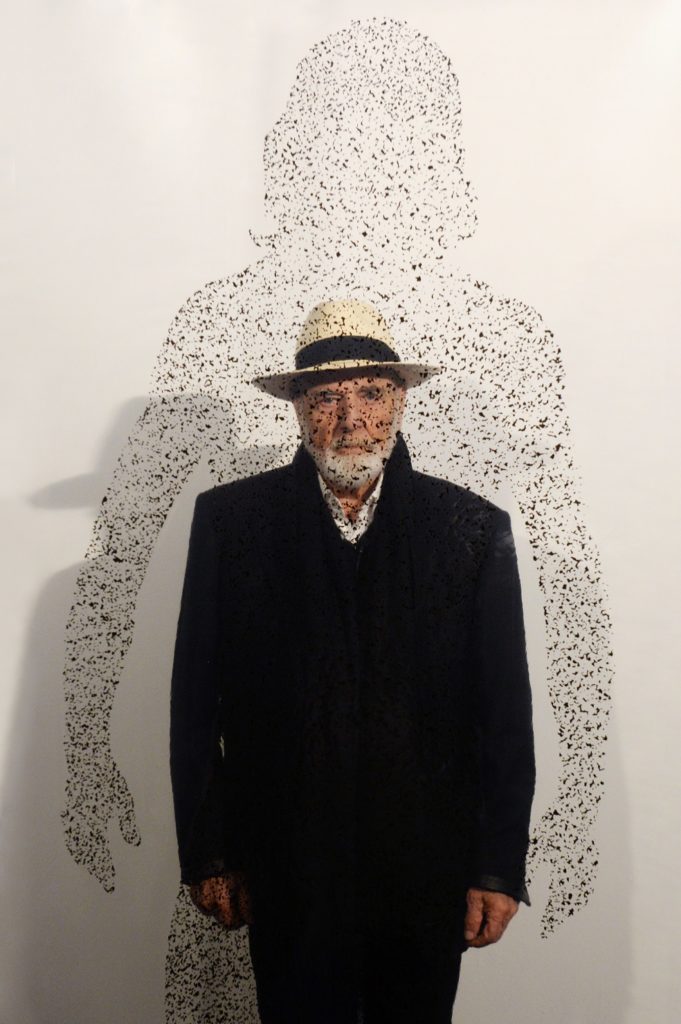
The figures that I impress in the mirror paintings are figures that are part of a costume, of a social and political period, in which we also see objects that were very modern at a certain time and are obsolete today. In my work, there is the practical concept of “memory” which leads to thinking of a new perspective that looks both forward and backward, both in the past and in the future.
Between wars and the pandemic, global society has changed a lot today. To find the Third Paradise today, what do you think is the most important priority?
There is a lot of talk about sustainability and the UN has issued 17 goals, but unfortunately, the reality is going in the opposite direction. We have reached a point where the concept of “creation” that lies in the Formula needs to be applied to start with schools, universities and opening new academies, as we did in Biella with UNIDEE – Accademia delle Idee (Academy of Ideas), which opens the third stage in society.
It is patient, precise, and rigorous work that must be done because it is no longer possible just to talk about ideals or ideologies, it is necessary to implement practices as we are doing in Biella which has been declared a UNESCO Creative City.
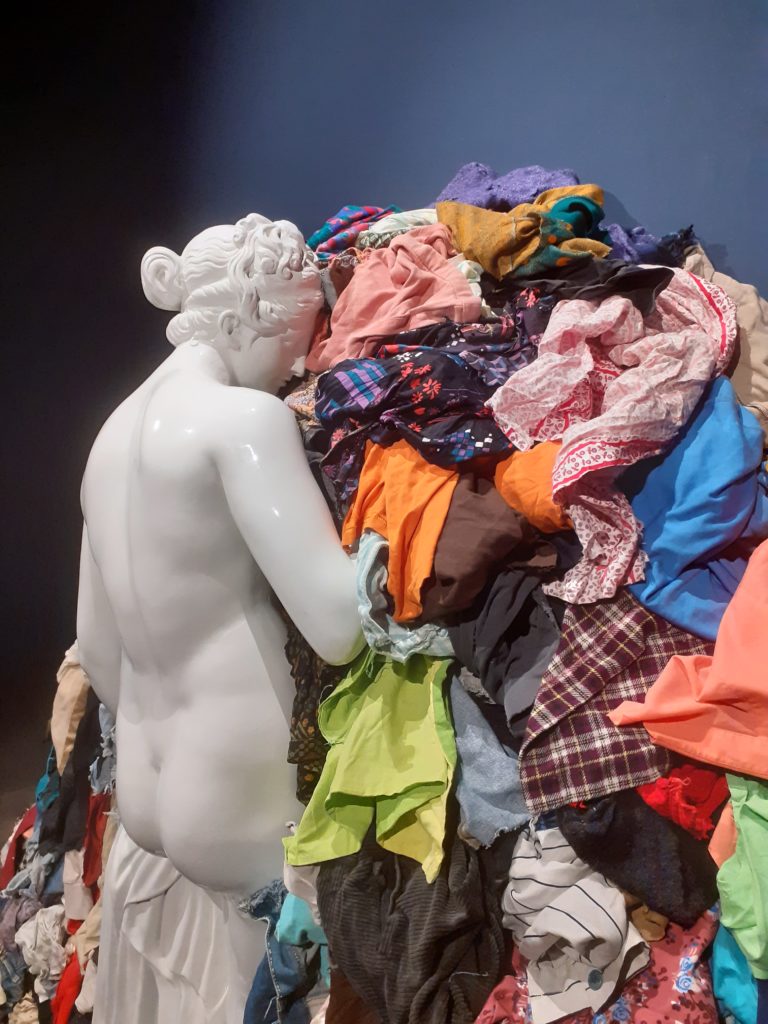
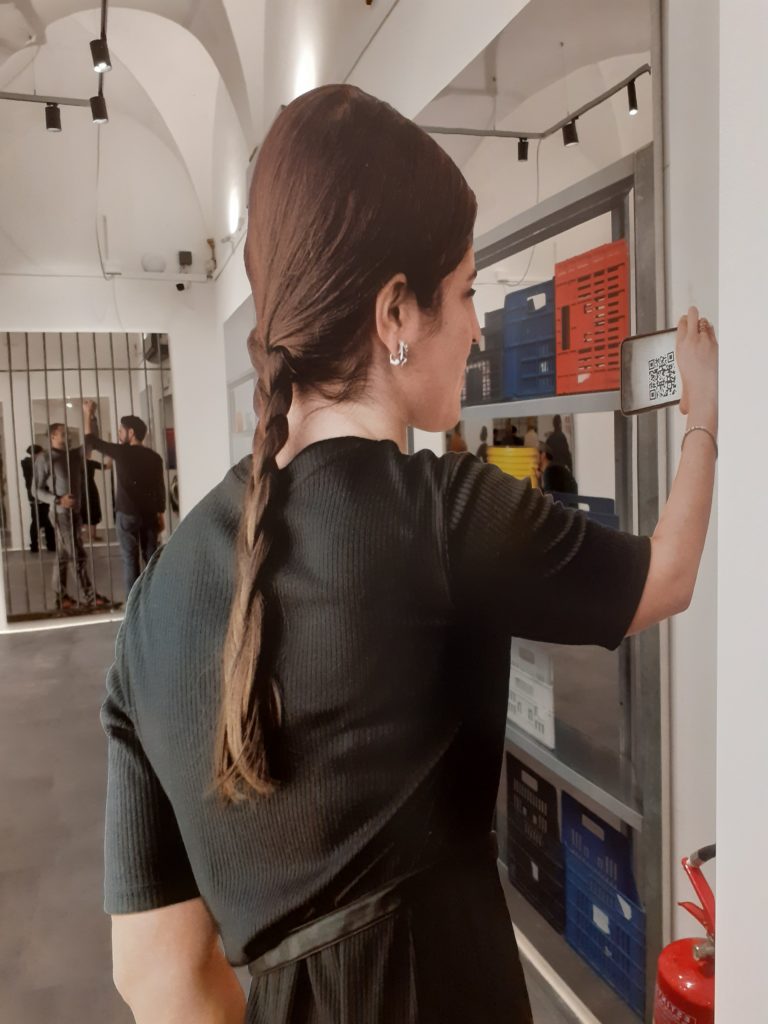
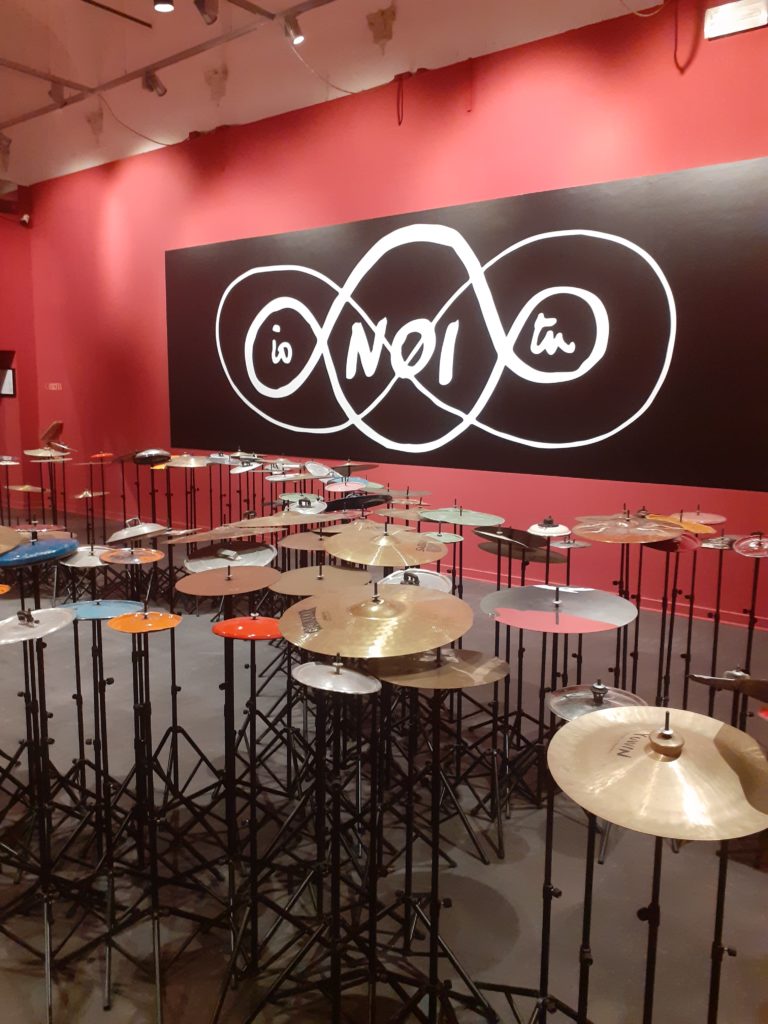
We have developed the formula of rebirth through the use of new techniques such as Città Arcipelago (Archipe City) which means that the whole Biella area becomes a city in which the built, natural and agricultural fields become one thing, one city. We are working to develop this concept and the Academy serves to animate young people who come from all over the world towards this new direction.
Therefore, the future of Cittadellarte is to offer above all to young people a creative direction to sensitize them to current issues through art and sustainability…
Yes, practically showing how a new concept of social organization is being born in the city which we have called demopractic, the practice to arrive at democracy (involves three operational phases: mapping, forum, and construction site). In the book La Formula della Creazione there is the whole journey I made to arrive at the realization of the formula within the current society that must be “re-created”.
We have to find practical systems and Biella is a center of social transformation because young people need to be offered opportunities, as well as believing in themselves.
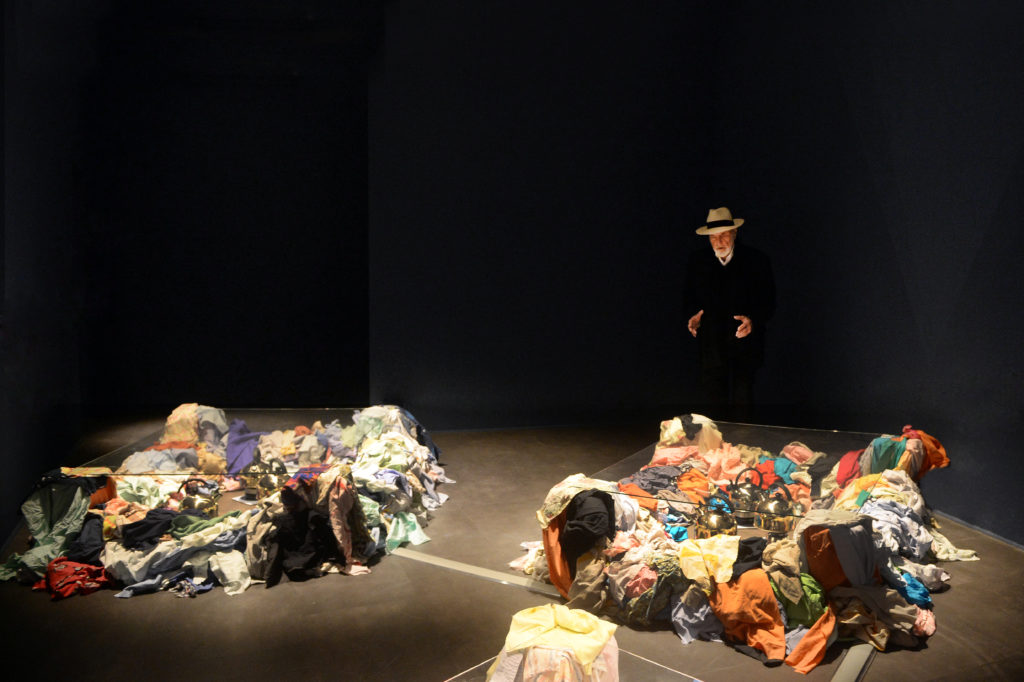
You are among the greatest exponents of Arte Povera, how do you consider the individual today in the era of digital communication?
Digital reality is an existing reality and is formed by techniques that can also be used in art. I made a self-portrait where I made many QR-codes about myself with which it is possible to read my story because if through technology I show what I have done, what I have managed to do for society up to now, it is a memory that remains like the one I described earlier about the Louvre Museum.
It is a memory that remains on me just like a tattoo and through the mobile phone and the Internet, it is possible to see all the stories that I have lived in my body.
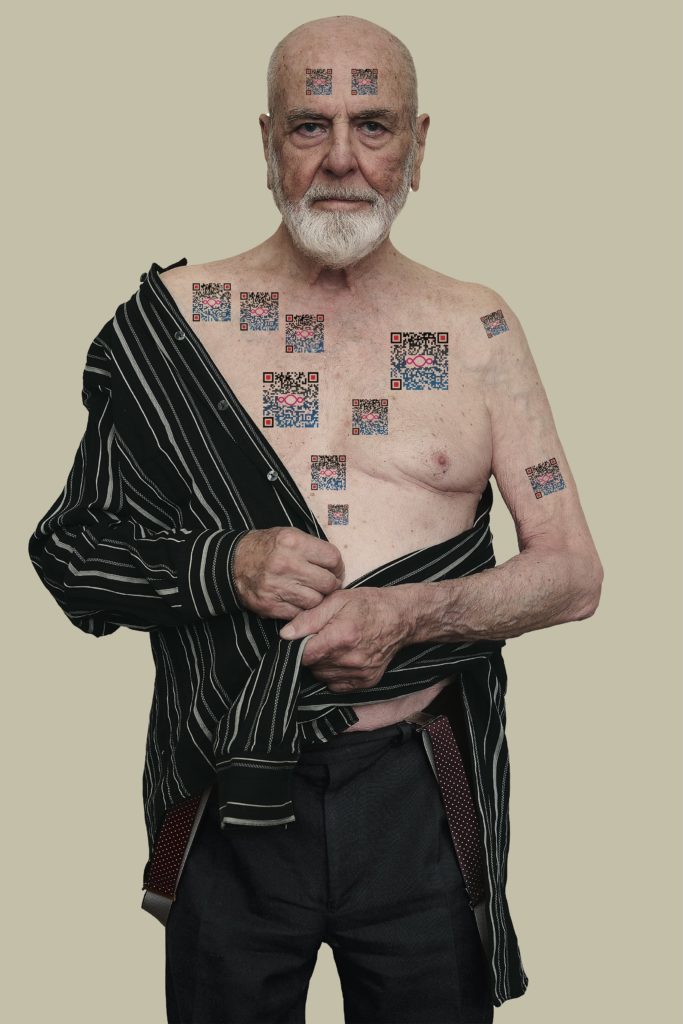
Technology is increasingly present in our daily life, with which anyone can somehow improvise an artist, photographer, journalist… Where is society going? What do you think of Artificial Intelligence?
You’re saying the right thing because everyone takes a picture with their mobile phone and puts it on the network and it’s the same thing I’ve been doing for some time with Mirror Painting: I’ve been taking selfies since the first mirror paintings, there’s you with everything around you.
The Mirror Painting is the mirror of the existing and today it is not only visual but also technological. Artists have every right to use anything they want because now with modern art a person can even stick a banana on a museum wall like it was done, so why not use artificial intelligence which allows you to make new and unexpected steps?
The problem with Artificial Intelligence lies only in the fact that there may be someone who uses it to our detriment and therefore to paralyze us in some way because it possesses all our movements, but if we can use it well, so be it.
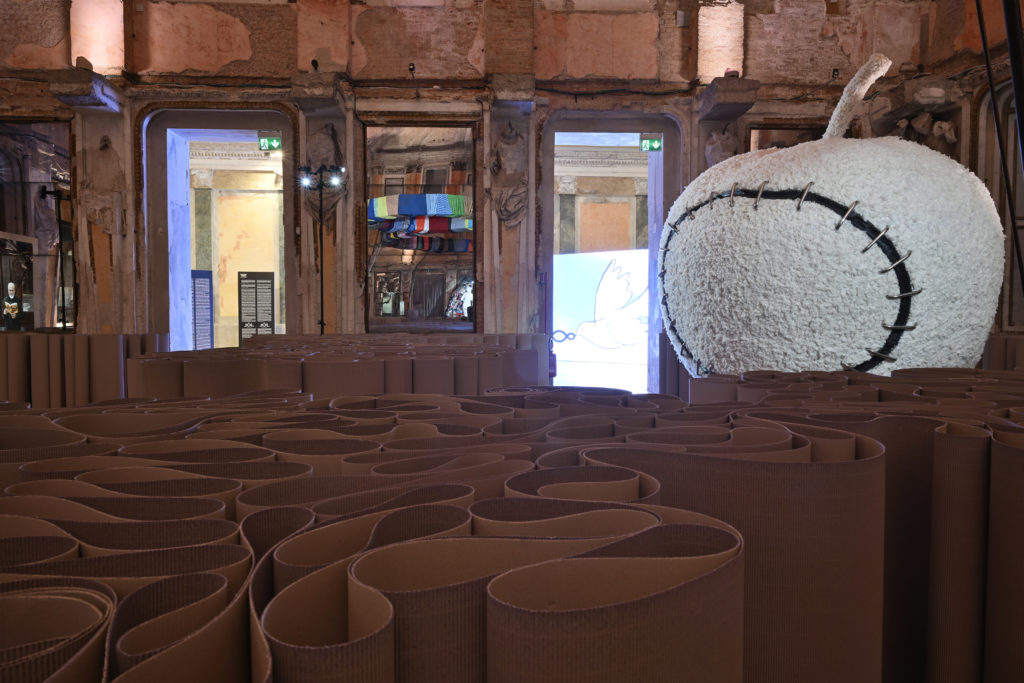
Is there anything you wouldn’t do again in your professional career or wish you had done?
I did all I could do and I can’t expect anything else. I managed to make the “formula of creation”, I can’t ask for more. Now I just have to take care of making it work and I would like to clarify that I have not arrived, but I have only arrived at the starting point!
You currently have so many ongoing and planned projects. What is the next step?
In this period I am presenting my book La Formula della Creazione in places representing different fields such as politics, economics, science, and religion.
The public meetings that we organize with people who have specificity in the various fields are recorded and become works of art because each one is inserted in a hand-painted QR-code on canvas; each brings with it an encounter on a specific topic taken from the book and then they become traditional works. I go into technology to bring it back to its origins.
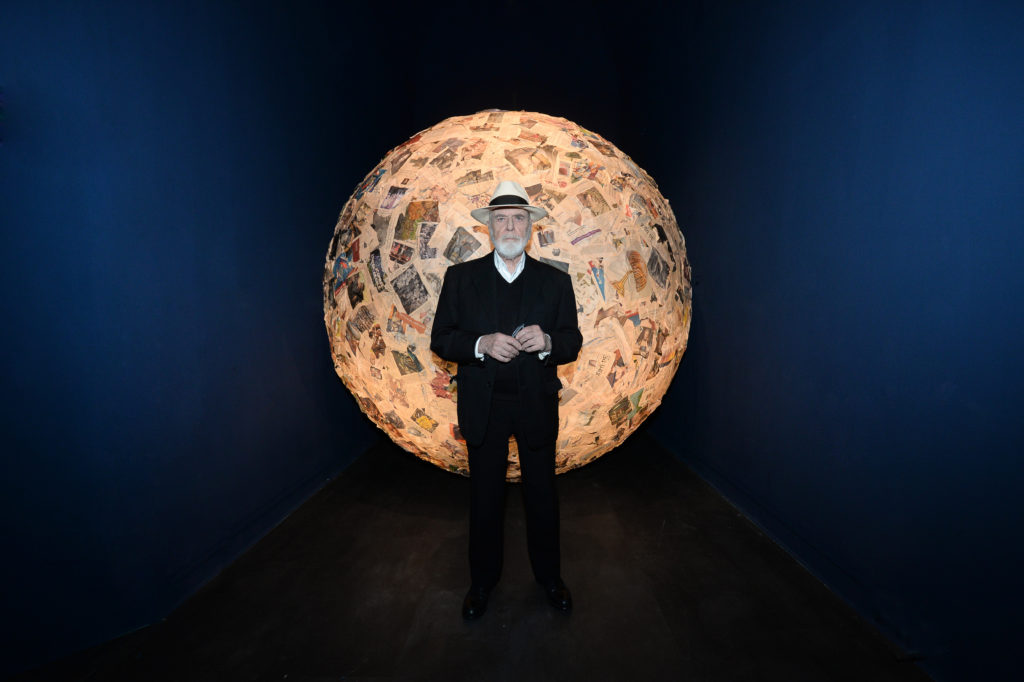
Interview by Fabio Pariante, Twitter / Instagram
MORE
Michelangelo Pistoletto: Instagram / Twitter / Facebook / Website
